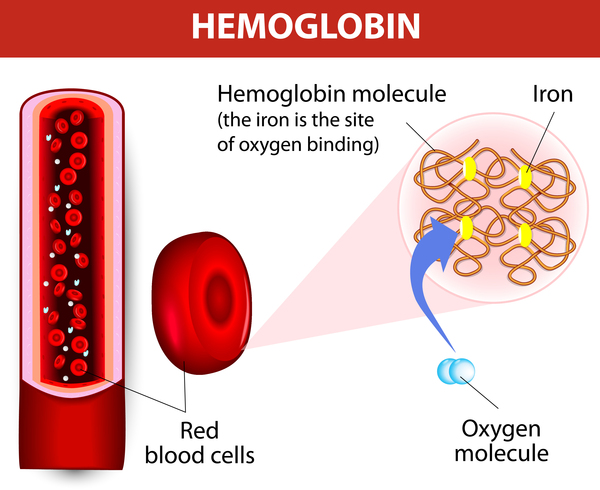Not Enough Blood
What?
Anemia--"an" meaning without and "emia" meaning blood or literally not enough blood--is a lack of red blood cells.
What is the function of red blood cells?
Red blood are vehicles delivering oxygen from the lungs to all of your tissues. Therefore a lack of red blood cells means insufficient delivery of oxygen to organs.
What happens when certain organs don't receive enough oxygen?
Palpitations and chest pain because the heart lacks oxygen.
Fatigue and dizziness because the brain lacks oxygen.
Shortness of breath because the lungs lack oxygen.
Pallor because the skin lacks oxygen.
Although anemia can make you feel quite terrible, many people don't experience overt symptoms because the anemia has developed gradually over weeks, months or even years.
Why?
Why would there be a lack of red blood cells?
Generally speaking, anemia can be divided into two causes:
- Decreased production of red blood cells
- Loss of red blood cells
Decreased production of red blood cells
The production of red blood cells is a coordinated process between the kidney and bone marrow (bones are hollow and filled with nascent blood cells). Upon sensing a lack of oxygen (remember, the purpose of red blood cells is to deliver oxygen throughout the body), the kidney releases a hormone called Erythropoietin. This hormone travels to the bone marrow and taps stem cells (yes, your bone marrow has stem cells!) to begin transforming into red blood cells. Any obstacle along this road--from chronic kidney disease to a leukemia invading the bone marrow--can induce anemia through decreased production of red blood cells.
Yet, there are several ingredients required to produce new red blood cells. The ones you need to know about are iron, vitamin B12 and folate. Without sufficient starting materials, anemia may ensue.
Another important cause of underproduction is genetic defects, like thalassemia, which causes impaired production of hemoglobin, the red pigmented protein which binds oxygen inside of red blood cells.
Loss of red blood cells
Loss of red blood cells through bleeding is the most common cause of anemia. Bleeding from the uterus (a la monthly shedding of the uterine lining) and the gastrointestinal tract (like from bleeding ulcers or cancers) are the most common mechanisms of blood loss. Consistent blood loss can lead to a lack of iron, thereby preventing adequate production of new red blood cells. #DoubleWhammy
Of course, massive trauma and subsequent blood loss, like getting stabbed in the jugular vein or a motor vehicle collision resulting in rupture of the spleen, can precipitate acute anemia.
Red blood cells can also be destroyed. Destruction of red blood cells can stem from genetic causes (like sickle cell anemia), infections (like malaria) and autoimmune disease (like lupus, rheumatoid arthritis and irritable bowel disease).
How?
A complete blood count measures the number of red blood cells, white blood cells and platelets present in the blood. Plasma is the liquid, non-cellular portion of blood.
How do you find out if you have anemia?
A simple blood test known as a complete blood count will measure the absolute and relative number of red blood cells contained in your blood. Remember, blood is more than just red blood cells. Two other important inhabitants are white blood cells (for immune function) and platelets (for clotting, following bleeding).
How do you treat anemia?
Treat the underlying cause! If due to bleeding, stop the bleeding. If due to lack of vitamin B12, give a B12 injection. If due to lack of iron, give an iron supplement. Upon detection of anemia, further testing can help elucidate the cause of the anemia.



